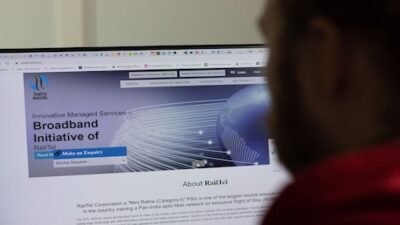China commands over 90% of the global rare earth supply chain and is prioritizing European manufacturers such as Stellantis and Volkswagen, leaving Indian companies in a wait-and-see position.
“It’s reminiscent of the semiconductor crisis, but amplified,” warns Hormazd Sorabjee, Editor of Autocar India. He cautions that if the situation isn’t addressed promptly, production lines could come to a halt.
The urgency of the matter is particularly heightened for EV manufacturers, who depend heavily on these magnets for electric motors. Nevertheless, ICE vehicles could also be impacted due to their reliance on components such as power steering and window motors.
Fortunately, the industry may have some respite, thanks to existing stockpiles.
Vinkesh Gulati, Director at United Automobiles and former FADA President, notes that “we have inventory at the dealership level” sufficient for 52–53 days, while OEMs maintain a buffer stock of “four to six weeks.”
“Currently, we have coverage until at least mid to late August,” Gulati stated, though he cautioned that if the crisis lingers, challenges could arise from September, coinciding with the critical festive season. With major sales events like Navratri approaching, the timing couldn’t be worse for a drawn-out supply shortage.
These are edited excerpts of the interview.
Q: Reports over the last 5-10 days indicate that China has begun supplying these magnets to European automakers. However, there seems to be no resolution for us yet. What do you foresee the consequences might be from July onwards if issues persist?
Sorabjee: This is a serious concern. It rivals the semiconductor crisis, but is arguably worse, as production lines could entirely shut down, leaving us with no choice but to source from China. Geopolitical factors will complicate matters, and India is not a critical market for China at this point; thus, they will naturally prioritize European brands with significant investments in China, such as Volkswagen. Countries like Germany will be prioritized first.
From what I understand, there’s been no significant progress in India, and obtaining necessary approvals is a lengthy and complex process, which adds to the challenge. This situation could escalate into a major crisis if not resolved swiftly.
Read Here | Rare earth edge gives China stronger hand in US trade tension: Lyn Alden
Q: What is your assessment of current inventory levels among manufacturers? Automakers such as Tata Motors and others are also affected by this situation. What should we prepare for?
Sorabjee: The EV makers will undoubtedly be the hardest hit since these rare earth magnets are crucial for electric motors, which are essential for vehicle assembly. However, ICE vehicles also use a significant amount of rare earth magnets. In an ICE vehicle, components like power steering and electric window motors also require these magnets.
As motors have been miniaturized, the need for rare earth magnets has increased, making them essential in the industry. It’s a commodity, but it’s concerning when a single country dominates 90% of the supply chain.
Q: Which other countries could potentially be considered for production diversification, as the “China Plus One” strategy is often discussed? Are there alternative sources of natural resources to mitigate this imbalance?
Sorabjee: Rare earths are abundant globally, even in India, but extracting them is quite challenging and requires tremendous capital investment, often in the billions. The extraction process is akin to finding a needle in a haystack because they exist in such minute quantities. The mining, processing, and production of finished products are all extremely capital-intensive.
This is where China has gained a significant advantage over other nations. Establishing the capability for extraction and production is not something that can be done overnight.
Read Here | Auto industry seeks govt help in expediting approvals for rare earth magnets import from China
Q: Can you provide insight into current inventory levels? What’s your perspective on EV and ICE passenger vehicles? Are we still in a manageable position until a resolution is reached?
Gulati: We have recently published data indicating that FADA shows 52 to 53 days of inventory at the dealership level, which is fortunate given the current rare earth magnet issues. Additionally, OEMs report holding four to six weeks of inventory at their plants, demonstrating that we are currently stable at least until mid or late August.
However, if the situation persists, shortages may emerge in September—just as the festive season begins, with Navaratri approaching and notable dates in August. I believe inventory levels will hold up until then, and hopefully some diplomatic solutions will surface by that time.
Q: To clarify, does that mean with the current inventories at dealerships and OEMs, we should be secure for about three months until the end of August?
Gulati: I hope so. We should be fine through mid to late August. This period is generally slow due to the monsoon and the lack of auspicious occasions. After August, conditions typically improve.
Q: While this crisis could be pivotal, passenger vehicle sales have not met expectations. Historically, a growth rate of 4% to 5% is considered acceptable. What are your thoughts on the broader context?
Sorabjee: We have experienced significant growth in recent years, reaching about 4.3 million units. However, expecting the same level of growth from such a high base is unrealistic. The demand is clearly beginning to taper off for several reasons, including rising vehicle costs. Moreover, the previous wave of replacement sales has largely settled down, leading to a more cyclical market.
As Vinkesh would agree, we are currently in a phase of stagnation or minimal growth, but eventually, we will enter another growth cycle. This is quite normal, and it’s unrealistic to assume double-digit growth, or even high single-digit growth given the current base.
Q: What about EV market penetration? Progress has been slower than anticipated, and while this benefits non-EV makers, it’s concerning for EV manufacturers. What are your expectations for EV penetration among four-wheelers and two-wheelers? Are there any upcoming launches to watch for?
Gulati: We anticipated that 2025 would be the pivotal year for EV launches, given the many new offerings unveiled at the Auto Expo Bharat Mobility Show, from the Hyundai electric Creta to Mahindra’s latest models. Tata is also planning to introduce one or two more products soon. By 2025, we expect most OEMs to have an EV offering in their portfolio, allowing dealerships to sell these vehicles, which wasn’t the case until 2024.
However, due to delays—like those for the Creta—it’s unlikely that 2025 will be the definitive year for EV adoption. I believe 2026 will see more substantial growth as key players like Maruti, Hyundai, and Mahindra begin offering competitive EVs ranging from ₹20-25 lakhs. This will drive up sales numbers.
Indeed, there are hurdles for EV adoption currently, but considering the current landscape, the growth rate is comparatively decent. Meanwhile, in the two-wheeler segment, we are witnessing a consistent month-on-month increase.
We are now averaging over 100,000 vehicles monthly, and with announcements from companies like HMSI regarding two new products, I expect a similar trend in two-wheeler EV sales, with about 80% of dealers eventually offering electric options. A crucial factor for EV adoption is visibility—if every dealer has a product available, it significantly boosts sales.
Also Read | India’s auto industry growth could slip into negative due to rare earth magnet shortage, says S&P Global’s Puneet Gupta


